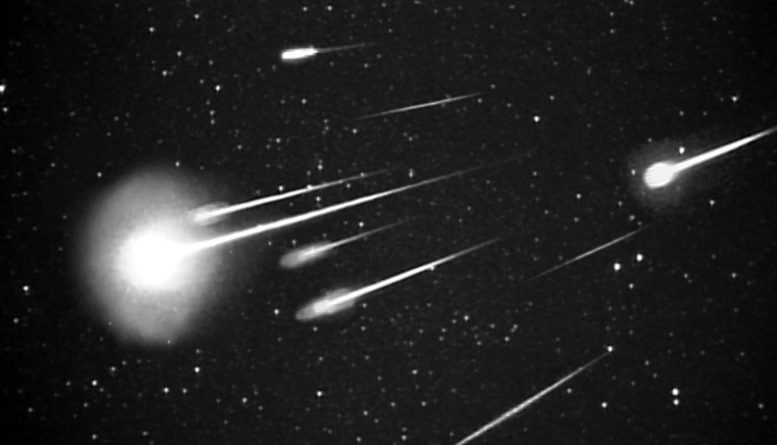
A burst of 1999 Leonid meteors as seen at 38,000 feet (11,600 meters) from Leonid Multi Instrument Aircraft Campaign. Astronomers have developed a meteor simulation tool to help assess selection biases and evaluate the populations of meteor showers. Credit: NASA/Ames Research Center/ISAS/Shinsuke Abe and Hajime Yano
A meteor is a rocky or metallic body that enters the Earth’s atmosphere (or the atmosphere of another planet) from space at high speed and burns up; meteors that mostly survive the trip and land on the ground are called meteorites.
Meteors have a wide range of sizes and compositions, and meteorites can land in pretty much any place at any time. Moreover, individual events aren’t repeated. Meteor astronomers must therefore rely on accurate measurements of available observations or statistical processing of large data sets to formulate predictions and theories. The best current models, however, lack firm constraints on key variables like the luminosity of a trail versus the object’s loss of kinetic energy.
Performing experiments in meteor science has been considered, but is notoriously difficult. Launching artificial objects, accelerating them to speeds of thousands of miles per hour, recreating the various conditions of meteor entry, and then observing the process of ablation is hard and expensive.
CfA astronomer Peter Veres and his colleagues have developed a cost-effective intermediate solution: a computer simulation that creates virtual meteors based on equations of motion, ablation, and luminosity models whose results can then be examined. The suite of tools the team developed is called ASMODEUS (All-Sky Meteor Optical Detection Efficiency Simulator) and it emphasizes statistical processing of large meteor datasets rather than precision calculations for individual meteors.
Several attempts at such simulations had been made before but none included an adequate model of the atmosphere or had the goal of directly comparing the resulting data to observations. The new code includes parameters for the Earth and its atmosphere, meteor material properties, equations for trajectories including gravity and drag, and for ablation and luminance; not least, the simulations consider the locations of virtual observers.
Of ten thousand simulated meteors, 1354 were “detected.” These included most bright ones, while others (particularly those passing near the horizon) were unlikely to be seen; the distribution of the properties of the simulated meteors was then compared with detection results.
The scientists are continuing to improve the code by including more advanced meteoroid dynamics and by addressing the fragmentation of meteors that have fragile compositions. Meanwhile, ASMODEUS can be used to assess selection biases in ground-based observing systems and help evaluate the mass and population character of meteor showers.
Reference: “ASMODEUS meteor simulation tool” by Martin Baláž, Juraj Tóth, Peter Vereš and Robert Jedicke, 4 June 2020, Planetary and Space Science.
DOI: 10.1016/j.pss.2020.104937

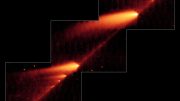

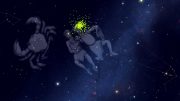
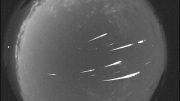
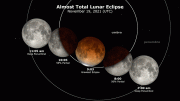
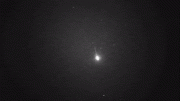


Be the first to comment on "Simulating Meteors With ASMODEUS (All-Sky Meteor Optical Detection Efficiency Simulator)"